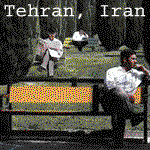USA: Further Information on legal concern / health concern / torture
PUBLIC AI Index: AMR 51/085/2006
01 June 2006
Further Information on UA 191/05 (AMR 51/114/2005, 21
July 2005) and follow-ups
(AMR 51/131/2005, 16 August 2005; AMR 51/136/2005, 31
August 2005; AMR
51/171/2005, 27 October 2005; AMR 51/197/2005, 02
December 2005; AMR 51/028/2006, 14 February 2006) - legal concern/health concern/torture
USA An unknown number of Guantánamo detainees
The number of Guantánamo detainees on hunger strike had risen to 75 as of 29 May, according to a US military spokesperson. Before this the number had fallen as low as three. The camp authorities have allegedly been ill-treating hunger strikers to pressure them into giving up.
The hunger strike began on 8 August 2005. Three detainees are believed to have been on hunger strike continuously since then, and have only been kept alive by being force-fed through a tube inserted into the stomach via the nose. One of the new group of hunger strikers is also being force-fed this way, according to the navy spokesperson.
The force-feeding method used at Guantánamo may amount to torture or other cruel, inhuman or degrading treatment or punishment. Detainees have reportedly been strapped into restraint chairs and force-fed with a thick plastic tube with a metal edge and deliberately fed too much in order to cause pain. According to their lawyers, they were put in isolation in cold rooms, and some were beaten, to punish them for joining the hunger strike.
The US authorities have previously downplayed the number of detainees involved in the hunger strike so as to avoid international criticism. They do not consider a detainee to be on hunger strike until he has refused all food for at least three days in succession. Lawyers say that some detainees on hunger strike have been accepting meals but throwing the food away, in order to avoid being force fed.
The spokesperson claimed that the increase in the number of hunger strikers was an "attention-getting" tactic and "consistent with al Qa’ida practice". Amnesty International, however, has received consistent reports that the hunger strikers' aim is to protest against their continued indefinite detention without charge or trial, the conditions at the camp and ill-treatment by camp guards.
The most recent communication from a hunger-striker was a note passed to his lawyer in March 2006 by Ahmed Errachidi, a Moroccan national and long-term UK resident. Indicating that it was in desperation at his continued detention that he had joined the hunger strike, he wrote: "Enough is enough. I have the right to protest peacefully. I am not harming them [the Americans]. I must be allowed to demonstrate peacefully. I do not want to die; I want to live, and I am not living here. My struggle is not to die, but it is a struggle for the Truth."
BACKGROUND INFORMATION
Around 460 men of 40 nationalities are detained without charge or trial at the US Naval Base at Guantánamo Bay, Cuba. The hunger strike at the facility began when the camp authorities reportedly reneged on promises to accept detainees' demands, which included bringing the camp into compliance with the Geneva Conventions, made during an earlier hunger strike, in July 2005.
Towards the end of 2005, it emerged that a number of the detainees on the hunger strike had become seriously ill. They included Fawzi al-Odah who, by this time, had requested that the force-feeding be stopped so that he be allowed to die. Around this time doctors warned his lawyers that despite the force-feeding Fawzi al-Odah was in imminent danger of death or permanent organ damage.
Amnesty International neither opposes nor recommends forcible feeding of prisoners on hunger strike. However, if forcible feeding is done in such a way as deliberately to cause suffering, Amnesty International considers that this would constitute torture or other cruel, inhuman or degrading treatment. The UN Special Rapporteur on torture has declared that if the reports about the force-feeding methods being used at Guantánamo are true, then it would amount to cruel treatment.
AI Index: AMR 51/085/2006
1 June 2006














0 Comments:
Post a Comment
<< Home